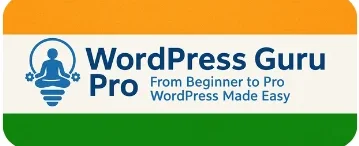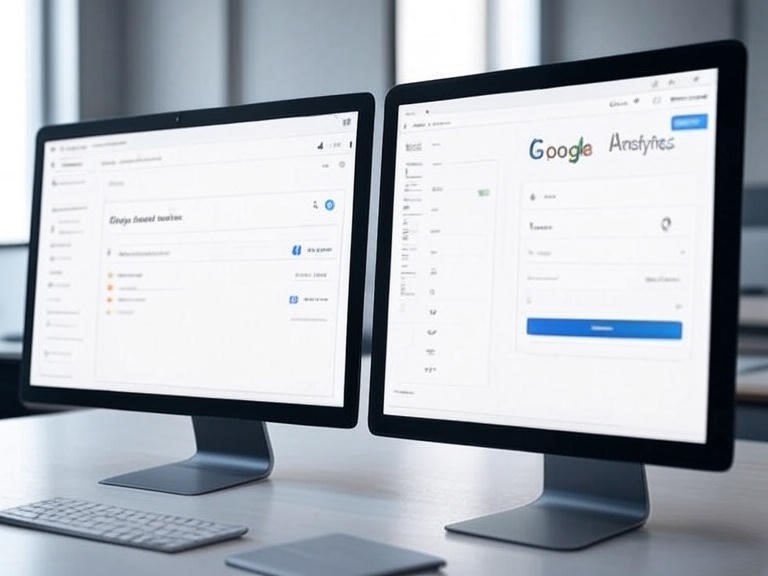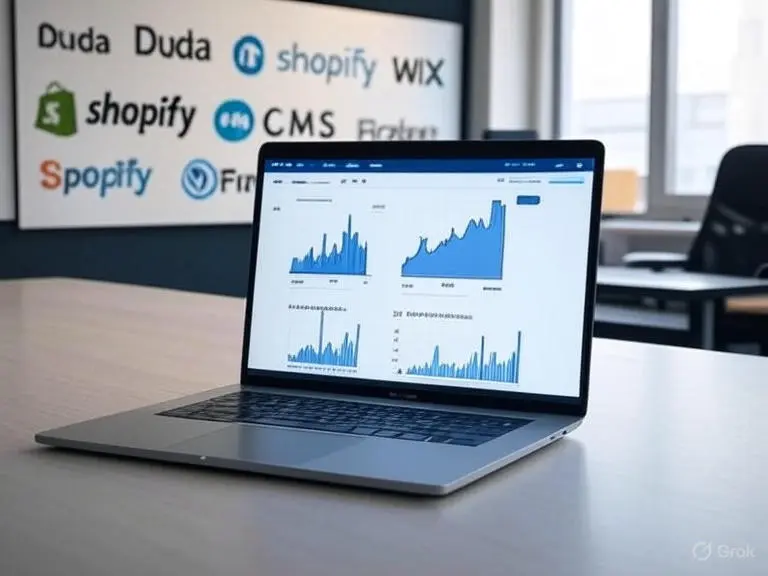
Introduction
In the fast-paced world of web development, Google’s Core Web Vitals (CWV) have emerged as critical benchmarks for user experience and search engine optimization (SEO). As we step into 2025, the stakes are higher than ever for Content Management Systems (CMS) to deliver blazing-fast, responsive, and visually stable websites through effective 2025 Core Web Vitals Optimization. WordPress, the dominant CMS powering over 40% of the web, faces fierce competition from platforms like Shopify, Duda, Wix, and Squarespace in the race to optimize for Largest Contentful Paint (LCP), Interaction to Next Paint (INP), and Cumulative Layout Shift (CLS). This blog post explores the 2025 Core Web Vitals Challenge, comparing WordPress’s performance against its rivals with a detailed Core Web Vitals Comparison, analyzing strengths and weaknesses, and providing actionable strategies to enhance WordPress Performance 2025. It also delves into the quest for the Best CMS for Speed 2025, including a focused look at WordPress vs Shopify CWV, to help website owners excel.
Understanding Core Web Vitals in 2025
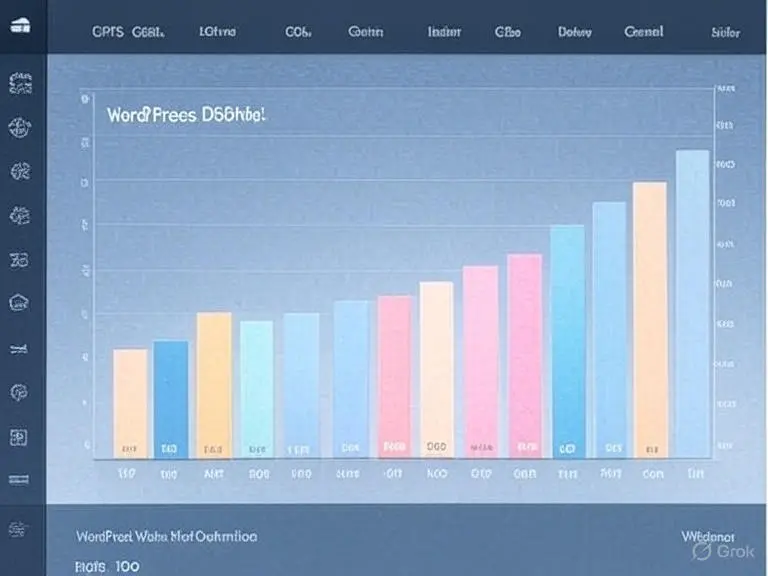
Core Web Vitals, introduced by Google in 2020, are user-focused metrics that measure key aspects of web performance as part of 2025 Core Web Vitals Optimization:
- Largest Contentful Paint (LCP): Tracks the time it takes for the largest visible content element (e.g., an image, video, or text block) to render. A good LCP score is under 2.5 seconds.
- Interaction to Next Paint (INP): Measures responsiveness by calculating the delay between a user’s interaction (e.g., clicking a button) and the browser’s visual response. A good INP score is under 200 milliseconds. INP replaced First Input Delay (FID) in March 2024 as a more comprehensive metric, crucial for WordPress Performance 2025.
- Cumulative Layout Shift (CLS): Quantifies visual stability by measuring unexpected layout shifts during page load. A good CLS score is less than 0.1.
These metrics are integral to Google’s page experience signals, directly influencing SEO rankings through a detailed Core Web Vitals Comparison. In 2025, Google is expected to enforce stricter thresholds, making CWV optimization a top priority for website owners seeking the Best CMS for Speed 2025, with insights from WordPress vs Shopify CWV shaping strategic decisions.
The 2025 Core Web Vitals Landscape
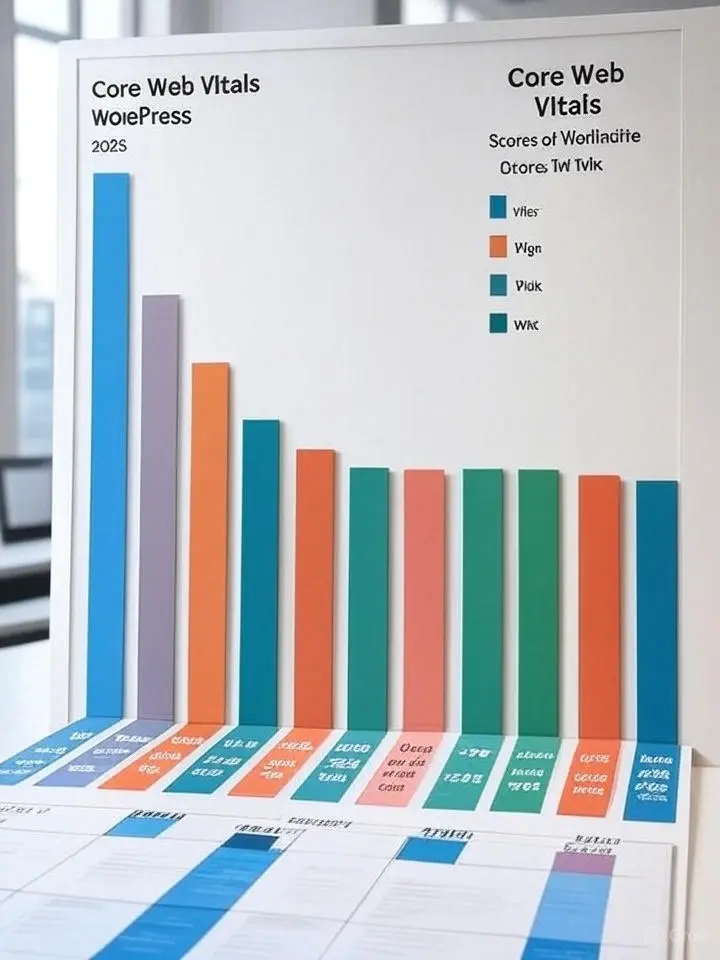
The Core Web Vitals Technology Report, based on data from HTTP Archive and Chrome User Experience Report (CrUX), provides insights into CMS performance as of June 2025. The table below summarizes the percentage of websites achieving a “good” CWV score across major platforms:
| CMS Platform | Good CWV Score (Mobile) | Good CWV Score (Desktop) | Key Strength | Key Weakness |
|---|---|---|---|---|
| Duda | 83.63% | 85.10% | Lightweight architecture | Limited plugin ecosystem |
| Shopify | 75.22% | 78.50% | Optimized for e-commerce | Limited customization |
| Wix | 70.15% | 73.40% | User-friendly interface | JavaScript-heavy designs |
| Squarespace | 68.90% | 71.20% | All-in-one solution | Restricted flexibility |
| WordPress | 36.44% | 40.80% | Extensive customization | Plugin bloat |
| Drupal | 35.12% | 38.90% | Robust security | Steep learning curve |
Source: Core Web Vitals Technology Report, June 2025
Duda leads the pack with an impressive 83.63% of its sites achieving good CWV scores, followed by Shopify and Wix. WordPress, despite its dominance, lags behind, particularly on mobile, where only 36.44% of sites meet CWV thresholds. This gap highlights the challenges WordPress faces in the 2025 Core Web Vitals Challenge.
WordPress: The Giant with Growing Pains
WordPress’s unparalleled flexibility and vast ecosystem make it a favorite for bloggers, businesses, and developers, positioning it well for 2025 Core Web Vitals Optimization. However, its CWV performance reveals both opportunities and obstacles.
Strengths of WordPress
- Unmatched Flexibility: With thousands of themes and plugins, WordPress supports everything from simple blogs to complex e-commerce platforms, a key factor in enhancing WordPress Performance 2025.
- Active Community: The WordPress Performance Team, formed in 2021, drives initiatives to improve CWV, with updates like WordPress 6.7 (expected in 2025) focusing on speed and responsiveness.
- SEO Integration: Plugins like Yoast SEO and Rank Math seamlessly incorporate CWV optimization into broader SEO strategies.
Weaknesses of WordPress
- Plugin Bloat: Excessive or poorly coded plugins can inflate page size, slowing LCP and INP, challenging 2025 Core Web Vitals Optimization.
- Theme Variability: Heavy themes or page builders like Elementor often introduce performance bottlenecks.
- Technical Debt: Legacy code and outdated plugins can hinder modern performance standards.
WordPress’s CWV Performance in 2025
WordPress has improved its CWV passing rate by over 8% since 2023, but it still trails competitors, as highlighted by a detailed Core Web Vitals Comparison. The shift to INP as a core metric has exposed responsiveness issues, particularly on JavaScript-heavy sites, impacting its standing in the race for the Best CMS for Speed 2025. Mobile performance remains a weak point, critical given Google’s mobile-first indexing, with WordPress vs Shopify CWV revealing significant gaps to address.
The Competition: How Other CMS Platforms Stack Up
To contextualize WordPress’s position, let’s examine its competitors’ performance in the 2025 Core Web Vitals Challenge.
Shopify: The E-Commerce Powerhouse
Shopify’s 75.22% good CWV score is remarkable for an e-commerce platform, where heavy assets often challenge performance. Its strengths include:
- Hosted Infrastructure: Shopify’s servers are optimized for speed, reducing TTFB and improving LCP.
- Native Optimization: Built-in features like product filters are designed for performance, minimizing third-party script reliance.
- Mobile Excellence: Shopify’s mobile-first approach aligns with Google’s priorities.
However, Shopify’s customization is limited compared to WordPress, and its proprietary nature can restrict developers.
Duda: The Performance Leader
Duda’s 83.63% good CWV score reflects its performance-first design. Key advantages include:
- Lightweight Codebase: Duda minimizes bloat, ensuring fast LCP and low CLS.
- INP Optimization: Efficient JavaScript handling boosts responsiveness.
- Ease of Use: Its drag-and-drop interface appeals to beginners without compromising performance.
Duda’s smaller market share and limited plugin ecosystem are its main drawbacks.
Wix and Squarespace: The User-Friendly Contenders
Wix and Squarespace compete closely with Shopify, particularly on mobile. Their strengths include:
- All-in-One Solutions: Integrated hosting, themes, and apps simplify optimization.
- Recent Improvements: Updates in 2024 and 2025 have boosted LCP and CLS performance.
However, JavaScript-heavy designs often lead to poor INP scores, and their closed ecosystems limit advanced customization.
Drupal: The Niche Performer
Drupal’s CWV scores are similar to WordPress’s, with slightly better INP performance but weaker overall results. Its robust security and scalability appeal to enterprise users, but its complexity deters non-technical users.
Strategies for Optimizing WordPress for Core Web Vitals
To compete in the 2025 Core Web Vitals Challenge, WordPress users must prioritize optimization. The following table lists popular WordPress plugins designed to improve CWV metrics, along with their key features and costs:
| Plugin | CWV Focus | Key Features | Cost (2025) |
|---|---|---|---|
| WP Rocket | LCP, INP, CLS | Caching, minification, lazy loading, CDN integration | $59/year (single site) |
| NitroPack | LCP, INP, CLS | Automated optimization, image compression, critical CSS | $21/month (starter plan) |
| Smush | LCP | Image compression, WebP conversion, lazy loading | Free (Pro: $7.50/month) |
| Autoptimize | LCP, INP | CSS/JS minification, inline critical CSS | Free |
| Async JavaScript | INP | Defer non-critical JavaScript | Free (Pro: $29.95/year) |
Note: Prices are approximate and based on 2025 data from plugin websites.
Below are detailed strategies to optimize WordPress for each CWV metric.
1. Optimize for Largest Contentful Paint (LCP)
LCP measures how quickly the main content loads. Common issues include slow server response times and large assets.
- Choose a Lightweight Theme: Themes like GeneratePress, Astra, or Neve are built for speed, minimizing bloat and supporting WebP images.
- Use a Content Delivery Network (CDN): CDNs like Cloudflare or StackPath reduce latency, improving TTFB and LCP.
- Optimize Images: Plugins like Smush or ShortPixel compress images, enable lazy loading, and serve WebP formats. Use
srcsetto deliver appropriately sized images. - Minimize Server Response Time: Managed WordPress hosts like WP Engine or Pressable offer optimized servers and caching. WP Engine’s Performance Insights tool provides LCP-specific recommendations.
- Reduce Render-Blocking Resources: Defer non-critical JavaScript and CSS with WP Rocket or Autoptimize to prioritize main content rendering.
2. Improve Interaction to Next Paint (INP)
INP measures responsiveness, and WordPress sites often struggle due to JavaScript-heavy plugins.
- Minimize JavaScript Execution: Use plugins like Async JavaScript to defer non-essential scripts, reducing INP delays.
- Optimize DOM Size: A bloated DOM slows responsiveness. Limit page builder use and remove unused plugins to streamline the DOM.
- Leverage Long Animation Frames (LoAF) API: Google’s LoAF API identifies slow animation frames affecting INP, guiding JavaScript optimization.
- Choose Lightweight Plugins: Replace resource-heavy plugins with alternatives like WP-Optimize for database cleanup.
3. Enhance Cumulative Layout Shift (CLS)
CLS measures visual stability, with WordPress sites often affected by dynamic elements like ads.
- Reserve Space for Dynamic Content: Define dimensions for images, ads, and embeds in HTML/CSS using the
aspect-ratioproperty to prevent shifts. - Optimize Fonts: Preload web fonts and use
font-display: swapto avoid invisible text, which contributes to CLS. - Choose CLS-Friendly Themes: Themes like Kadence and Blocksy minimize layout shifts caused by dynamic content.
- Manage Ads and Pop-Ups: Use plugins to delay or fade in ads without shifting content, such as those integrated with WP Rocket.
4. Monitor and Maintain Performance
Ongoing monitoring is essential to sustain CWV performance. The table below provides a checklist for WordPress users to ensure consistent optimization:
| Task | Tool | Frequency | CWV Impact |
|---|---|---|---|
| Run PageSpeed Insights | Google PageSpeed Insights | Monthly | LCP, INP, CLS |
| Check CWV in Search Console | Google Search Console | Biweekly | LCP, INP, CLS |
| Test multiple pages | Lighthouse | Monthly | LCP, INP, CLS |
| Update plugins/themes | WordPress Dashboard | Monthly | INP, CLS |
| Monitor server response time | Hosting provider dashboard | Weekly | LCP |
| Compress and optimize images | Smush/ShortPixel | Per upload | LCP, CLS |
Tip: Automate monitoring with tools like WP Engine’s Performance Insights or Cloudflare’s analytics for real-time alerts.
WordPress vs. Competitors: A Head-to-Head Comparison

Let’s compare WordPress with Shopify, Duda, and Wix in terms of CWV performance and optimization potential.
WordPress vs. Shopify
- CWV Performance: Shopify’s 75.22% good CWV score outpaces WordPress’s 36.44% (mobile), thanks to its optimized hosting and e-commerce features.
- Customization: WordPress offers unmatched flexibility with its plugin ecosystem, while Shopify’s customization is limited to its app store.
- Optimization Ease: Shopify’s all-in-one platform simplifies performance tweaks, but WordPress requires technical expertise for comparable results.
Verdict: Shopify is ideal for e-commerce sites prioritizing performance, while WordPress suits users needing extensive customization.
WordPress vs. Duda
- CWV Performance: Duda’s 83.63% good CWV score surpasses WordPress, driven by its lightweight architecture and INP optimization.
- Scalability: WordPress supports complex, large-scale sites, while Duda is better for small to medium businesses.
- Ease of Use: Duda’s drag-and-drop interface is beginner-friendly, but WordPress’s plugin reliance increases complexity.
Verdict: Duda excels in out-of-the-box performance, but WordPress offers greater versatility.
WordPress vs. Wix
- CWV Performance: Wix’s mobile performance rivals Shopify’s, but its INP scores lag due to JavaScript. WordPress faces similar INP challenges but has more optimization tools.
- User Experience: Wix’s intuitive editor is beginner-friendly, while WordPress requires more technical knowledge.
- Flexibility: WordPress’s open-source nature enables extensive customization, unlike Wix’s closed platform.
Verdict: Wix suits non-technical users, but WordPress provides greater control for developers.
The Future of WordPress in the CWV Challenge
WordPress is actively addressing its CWV shortcomings through:
- WordPress 6.7 Enhancements: Expected in 2025, this release will introduce advanced caching and optimized database queries to boost LCP and INP, aligning with 2025 Core Web Vitals Optimization.
- Performance Plugins: Tools like WP Rocket and NitroPack automate optimizations, reducing reliance on manual tweaks and enhancing WordPress Performance 2025.
- Community Initiatives: The “More in Core” initiative aims to integrate performance features into WordPress Core, minimizing plugin dependency and supporting its quest for the Best CMS for Speed 2025.
However, challenges like the 2024 Automattic-WP Engine dispute highlight the need for greater ecosystem stability. WordPress must balance its open-source ethos with performance demands to remain competitive, as insights from Core Web Vitals Comparison and WordPress vs Shopify CWV underscore the urgency to close the performance gap.
Actionable Takeaways for WordPress Users
To excel in the 2025 Core Web Vitals Challenge, WordPress users should:
- Audit Sites Regularly: Use PageSpeed Insights and Search Console to identify CWV issues across key pages.
- Invest in Managed Hosting: Choose hosts like WP Engine or Pressable with built-in performance tools.
- Streamline Plugins and Themes: Remove unused plugins and use CWV-optimized themes like Astra or GeneratePress.
- Implement a CDN: Reduce latency with Cloudflare or StackPath.
- Monitor Continuously: Set up automated alerts to maintain CWV performance.
Conclusion
The 2025 Core Web Vitals Challenge underscores the critical role of performance in delivering exceptional user experiences and securing SEO rankings through effective 2025 Core Web Vitals Optimization. While WordPress trails competitors like Duda and Shopify in CWV scores, its flexibility and community-driven improvements position it for growth in WordPress Performance 2025. By adopting lightweight themes, efficient plugins, and robust hosting, WordPress users can close the performance gap, informed by a detailed Core Web Vitals Comparison. As Google’s standards evolve, WordPress’s ability to adapt will determine its success in the competitive CMS landscape, making it a contender for the Best CMS for Speed 2025, especially when evaluated through the lens of WordPress vs Shopify CWV.
FAQ: 2025 Core Web Vitals Challenge
1. What are Core Web Vitals, and why do they matter in 2025?
Core Web Vitals (CWV) are Google’s user-centric metrics measuring website performance: Largest Contentful Paint (LCP) for loading speed, Interaction to Next Paint (INP) for responsiveness, and Cumulative Layout Shift (CLS) for visual stability. In 2025, they’re critical for user experience and SEO, as Google enforces stricter thresholds, impacting search rankings.
2. Why is WordPress lagging in Core Web Vitals compared to competitors?
WordPress’s flexibility comes with challenges like plugin bloat, heavy themes, and technical debt, leading to a mobile CWV passing rate of 36.44% compared to Duda’s 83.63% and Shopify’s 75.22%. These issues slow LCP and INP, especially on mobile, where Google prioritizes indexing.
3. Which CMS performs best for Core Web Vitals in 2025?
Duda leads with an 83.63% good CWV score, followed by Shopify (75.22%) and Wix (70.15%). Their lightweight architectures and optimized hosting give them an edge over WordPress and Drupal, particularly in INP and mobile performance.
4. How can I improve LCP on my WordPress site?
To optimize Largest Contentful Paint (LCP):
Use lightweight themes like Astra or GeneratePress.
Implement a CDN (e.g., Cloudflare) to reduce latency.
Optimize images with plugins like Smush or ShortPixel.
Choose managed hosting (e.g., WP Engine) for faster server response times.
Minify CSS/JS with WP Rocket or Autoptimize.
5. What causes poor INP scores on WordPress, and how can I fix them?
Poor Interaction to Next Paint (INP) scores often stem from JavaScript-heavy plugins or bloated DOMs. To improve:
Defer non-critical JavaScript using Async JavaScript.
Reduce plugin usage to streamline the DOM.
Use Google’s Long Animation Frames (LoAF) API to identify slow scripts.
Opt for lightweight alternatives like WP-Optimize.
6. How do I minimize CLS on my WordPress site?
To reduce Cumulative Layout Shift (CLS):
Define dimensions for images and ads using the aspect-ratio CSS property.
Preload web fonts and use font-display: swap.
Choose CLS-friendly themes like Kadence or Blocksy.
Manage ads/pop-ups with plugins to prevent layout shifts.
7. Which WordPress plugins are best for CWV optimization?
Top plugins include:
WP Rocket ($59/year): Caching, minification, lazy loading.
NitroPack ($21/month): Automated CWV optimization.
Smush (Free/Pro $7.50/month): Image compression and WebP support.
Autoptimize (Free): CSS/JS optimization.
Async JavaScript (Free/Pro $29.95/year): JavaScript deferral.
8. How does WordPress compare to Shopify or Wix for CWV?
Shopify (75.22% good CWV) and Wix (70.15%) outperform WordPress (36.44%) due to optimized hosting and less reliance on third-party scripts. However, WordPress offers greater customization, making it ideal for complex sites if optimized properly.
9. How often should I monitor my site’s CWV performance?
Monitor CWV biweekly using Google PageSpeed Insights, Search Console, or Lighthouse, especially after updates. Test multiple pages (e.g., homepage, blog posts) to ensure consistent performance across your site.
10. Will WordPress improve its CWV performance in 2025?
Yes, WordPress 6.7 (expected 2025) will introduce advanced caching and database optimizations. The Performance Team’s “More in Core” initiative aims to reduce plugin dependency, but challenges like ecosystem disputes may slow progress.
11. Should I cite sources in my CWV article?
Citing sources like the Core Web Vitals Technology Report or WPBeginner enhances credibility, especially for data-driven claims (e.g., CWV passing rates). Use in-text hyperlinks and a concise references list to keep it reader-friendly.
Key Takeaways
- Core Web Vitals Are Critical for 2025: Google’s Core Web Vitals (LCP, INP, CLS) are essential for user experience and SEO, with stricter thresholds expected in 2025 as part of 2025 Core Web Vitals Optimization. Websites must achieve LCP under 2.5 seconds, INP under 200 milliseconds, and CLS below 0.1 to rank well.
- WordPress Lags in CWV Performance: Despite powering over 40% of the web, WordPress has a mobile CWV passing rate of 36.44%, trailing competitors like Duda (83.63%) and Shopify (75.22%), particularly in mobile performance and INP, highlighting a key challenge for WordPress Performance 2025.
- Competitors’ Strengths Highlighted:
- Duda: Leads with a lightweight codebase and strong INP performance but lacks WordPress’s plugin ecosystem.
- Shopify: Excels in e-commerce with optimized hosting, though customization is limited.
- Wix/Squarespace: Offer user-friendly interfaces and solid mobile performance but struggle with INP due to JavaScript-heavy designs.
- WordPress’s Strengths and Weaknesses:
- Strengths: Unmatched flexibility, robust community, and SEO integration via plugins like Yoast.
- Weaknesses: Plugin bloat, heavy themes, and technical debt hinder LCP and INP scores, impacting 2025 Core Web Vitals Optimization.
- Optimization Strategies for WordPress:
- LCP: Use lightweight themes (e.g., Astra), CDNs (e.g., Cloudflare), and image optimization plugins (e.g., Smush).
- INP: Minimize JavaScript with plugins like Async JavaScript and streamline the DOM by reducing plugin use.
- CLS: Reserve space for dynamic content, preload fonts, and choose CLS-friendly themes like Kadence.
- Top Tools for WordPress: Plugins like WP Rocket and NitroPack automate CWV optimizations, including caching, minification, and image compression, while managed hosts like WP Engine and Pressable offer built-in performance tools to improve LCP and TTFB, supporting WordPress Performance 2025.
- Continuous Monitoring Is Essential: Regularly audit sites with Google PageSpeed Insights, Search Console, and Lighthouse to maintain CWV scores across key pages.
- Future of WordPress: WordPress 6.7 (expected 2025) and initiatives like “More in Core” aim to enhance performance, but ecosystem challenges (e.g., plugin quality, Automattic disputes) require ongoing attention for Best CMS for Speed 2025.
- Actionable Steps:
- Audit your site for CWV issues.
- Choose performance-optimized themes and plugins.
- Invest in managed hosting and a CDN.
- Monitor performance biweekly to stay ahead of Google’s evolving standards, aligning with Core Web Vitals Comparison insights.
- Competitive Edge: Understand WordPress vs Shopify CWV dynamics to leverage strengths and address weaknesses effectively.
Sources:
- Core Web Vitals Technology Report, June 2025
- WPBeginner, “How to Optimize Core Web Vitals for WordPress”
- NitroPack, “10+ New Optimizations For Your 2025 Core Web Vitals Strategy”
- WP Kraken, “Core Web Vitals WordPress Edition (Tutorial for 2025)”
- Pressable, “How To Improve Core Web Vitals on Your WordPress Site”
- NitroPack, “Core Web Vitals: Everything You Need to Know (2025 Guide)”

📢 Disclaimer
The content provided on WordPress Guru Pro is based on personal experience, research, and practical use of tools like Elementor, Astra, and Rank Math. While I aim to offer accurate and up-to-date guidance, I am not liable for individual results or third-party plugin/theme performance. Always test tools before deploying on a live site.
This post reflects my role as a WordPress expert for beginners, and the article, “2025 Core Web Vitals Challenge: WordPress Versus Everyone” is intended for educational purposes only.
🔎 Some links on this page may be affiliate links, which means I may earn a small commission at no extra cost to you — I only recommend tools I personally use and trust, like Hostinger.
📩 Let’s Connect!
Need help with your WordPress site? Want to collaborate or ask a question?
👉 Contact Me
👉 Or email me directly: contact@wordpressgurupro.com
Thanks for visiting — let’s build something amazing together! Hope you enjoy my article,”10 Best Free WordPress Themes for Blogs in 2025“
While you’re here, don’t forget to explore our top resources:
